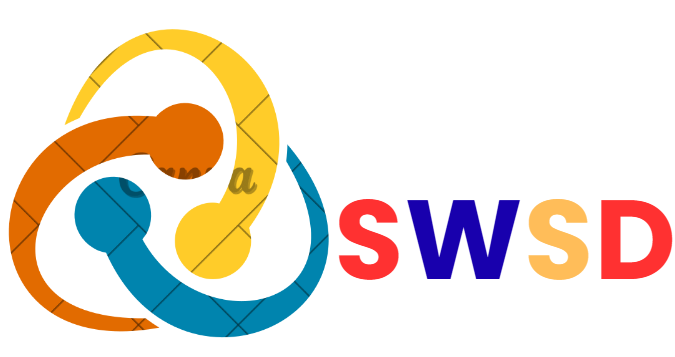Technology has always been at the heart of human progress. From the invention of the wheel to the rise of artificial intelligence, technology has transformed the way we live, work, and interact with the world. It is the tool through which societies solve problems, improve efficiency, and create new possibilities. In the modern era, technology evolves at an unprecedented pace, influencing every aspect of daily life and redefining the boundaries of what is possible.
Understanding Technology
At its core, technology refers to the application of scientific knowledge for practical purposes. It encompasses tools, systems, machines, and processes that help humans achieve specific goals. While ancient technology included stone tools and agricultural methods, today’s innovations range from quantum computing to space exploration.
Technology is not limited to physical devices; it also includes software, algorithms, and data systems that power communication, automation, and decision-making.
The Impact of Technology on Daily Life
Technology touches nearly every part of modern life. Smartphones keep us connected to information and people at all times. The internet provides instant access to knowledge, entertainment, and services. Smart home devices allow us to control lighting, security, and climate with a simple voice command.
Even basic activities like shopping, banking, and learning have been transformed. Online marketplaces allow consumers to purchase products from anywhere in the world, while digital banking makes financial transactions faster and more secure. E-learning platforms enable students to access education regardless of location.
Technology in Communication
One of technology’s most profound impacts has been on communication. Email, instant messaging, video conferencing, and social media have made global communication instant and cost-effective. Businesses can collaborate across continents in real time, and families can stay connected despite physical distances.
However, the speed and reach of digital communication also bring challenges, such as misinformation, reduced face-to-face interaction, and privacy concerns. Finding a healthy balance between online and offline communication is essential.
Technology in Healthcare
The healthcare sector has benefited immensely from technological advancements. Modern diagnostic tools, such as MRI machines and genetic testing, allow for earlier and more accurate detection of diseases. Robotic surgery and telemedicine have expanded access to specialized care.
Wearable health devices track heart rate, sleep patterns, and physical activity, empowering individuals to take charge of their own health. Artificial intelligence is also being used to predict disease outbreaks, analyze medical images, and develop personalized treatment plans.
Technology and Education
Technology has revolutionized education, making learning more interactive, accessible, and personalized. Digital classrooms, online courses, and educational apps provide flexibility for students of all ages. Virtual reality (VR) and augmented reality (AR) offer immersive learning experiences, from virtual science labs to historical recreations.
AI-powered tools can assess students’ strengths and weaknesses, recommending tailored learning paths. This level of personalization was impossible in traditional education systems but is now becoming increasingly common.
Technology in Business and Industry
Businesses rely on technology for operations, marketing, and decision-making. Automation has streamlined manufacturing, reducing costs and increasing precision. Data analytics allows companies to understand customer behavior and make informed strategic decisions.
The rise of e-commerce, cloud computing, and remote work technologies has transformed traditional business models. Startups can now compete with established corporations by leveraging digital platforms to reach global markets.
Emerging Technologies Shaping the Future
Several emerging technologies are poised to redefine industries and societies:
- Artificial Intelligence (AI): Enhances decision-making, automates tasks, and enables machines to learn from data.
- Blockchain: Offers secure, transparent transactions and is the foundation of cryptocurrencies and decentralized systems.
- 5G Networks: Provide faster, more reliable internet, enabling new possibilities in communication, IoT, and autonomous vehicles.
- Quantum Computing: Promises to solve complex problems far beyond the capabilities of current computers.
- Green Technologies: Focus on renewable energy, energy efficiency, and reducing environmental impact.
Challenges of Technology
While technology brings countless benefits, it also raises concerns:
- Privacy and Security: Data breaches, cyberattacks, and identity theft are growing risks.
- Digital Divide: Unequal access to technology can widen social and economic gaps.
- Job Displacement: Automation may replace certain types of work, requiring retraining and adaptation.
- Overdependence: Relying too heavily on technology can lead to reduced problem-solving skills and critical thinking.
Addressing these challenges requires responsible innovation, ethical guidelines, and inclusive policies that ensure technology benefits everyone.
Technology and Sustainability
Technology plays a critical role in addressing environmental issues. Renewable energy technologies, smart grids, and electric vehicles are reducing carbon emissions. Precision agriculture uses sensors and AI to optimize farming, reducing waste and conserving resources.
The push for sustainable technology ensures that innovation not only drives economic growth but also protects the planet for future generations.
Conclusion
Technology is more than a collection of tools — it is a driving force that shapes economies, cultures, and individual lives. From improving healthcare and education to connecting people across the globe, its influence is both powerful and far-reaching.
As technology continues to advance, the challenge will be to harness its potential while addressing its risks. By prioritizing ethical development, sustainability, and equal access, society can ensure that technology remains a force for progress and human well-being.
In the end, technology’s true value lies not just in what it can do, but in how we choose to use it.




